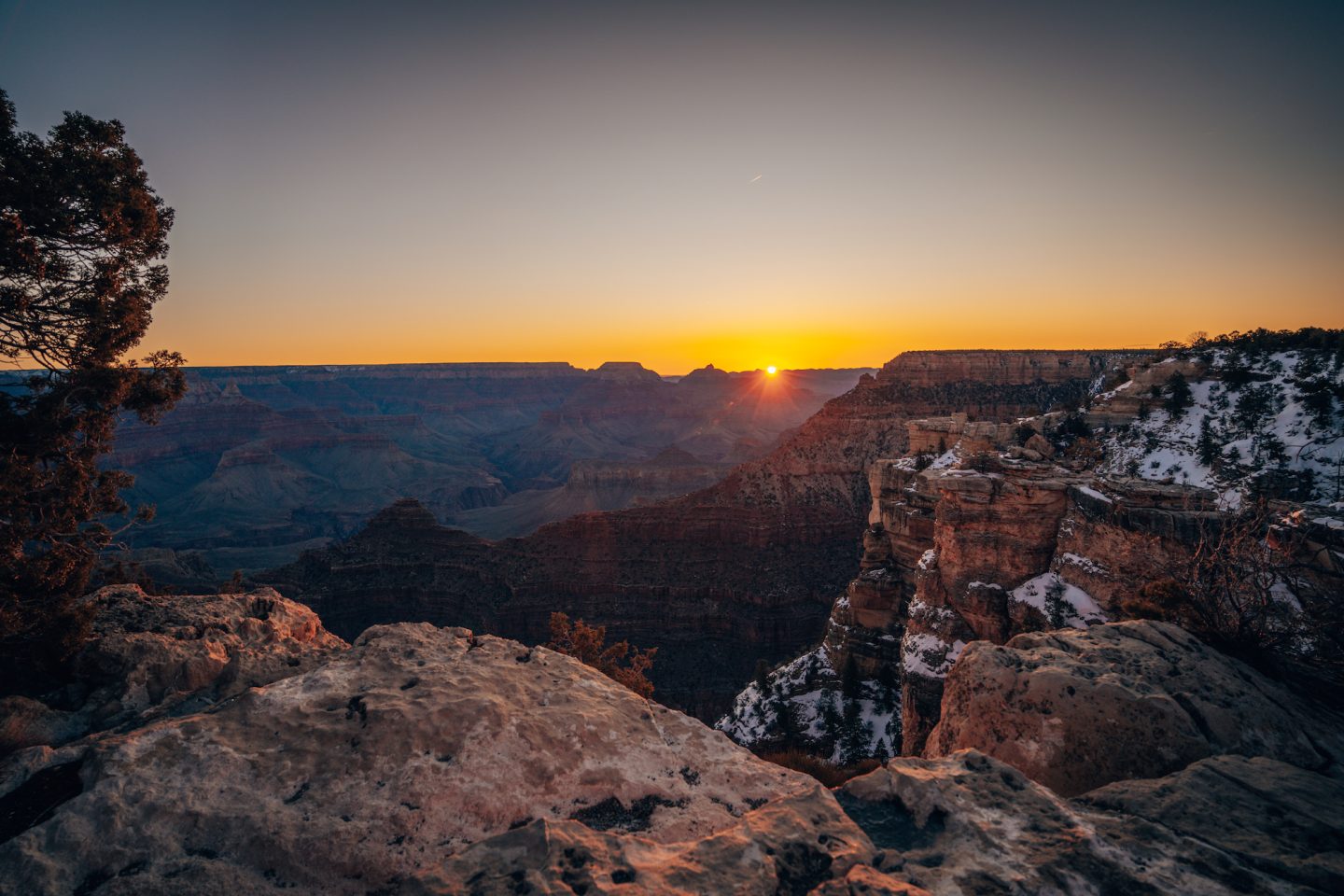
One of the world’s most iconic natural wonders and a true marvel of Mother Nature, is The Grand Canyon National Park in Arizona. Spanning over 277 miles, the Grand Canyon is a breathtaking expanse of layered rock, towering cliffs, and shimmering waterways that attracts millions of visitors each year. From hiking and camping to rafting and helicopter tours, there’s no shortage of ways to explore this awe-inspiring destination. In this guide, we’ll take a deep dive into the Grand Canyon National Park. Exploring what there is to do, where to stay, and offering tips and tricks for making the most of your visit. So pack your bags, grab your camera, and get ready to discover the wonders of the Grand Canyon.
ABOUT GRAND CANYON NATIONAL PARK
The history of the Grand Canyon National Park is long and storied, dating back thousands of years to the indigenous tribes who called the area home. For centuries, the Havasupai, Hualapai, Hopi, and other Native American groups lived, hunted, and traded in the region. Leaving behind a rich cultural legacy that is still celebrated today.
In the 16th century, Spanish explorers first laid eyes on the Grand Canyon. Followed by American explorers and pioneers in the 19th century. By the early 20th century, the Grand Canyon had become a popular destination for tourists. And in 1919, it was established as a national park to preserve and protect its natural wonders for generations to come. Today, the Grand Canyon National Park is one of the most visited parks in the world, attracting millions of visitors each year.
INTERESTING FACTS ABOUT THE GRAND CANYON
HOW DID THE GRAND CANYON FORM?
The Grand Canyon was formed over millions of years through a combination of erosion and geological activity. It all began over 6 million years ago, when the Colorado River began cutting through the rock layers of the area. Gradually carving out the deep and winding canyon we see today. This process was aided by a series of uplifts and faulting events, which caused the land to rise and tilt, further exposing the rock layers to erosion.
Over time, the river continued to deepen and widen the canyon, carving out stunning geological formations like the towering cliffs and layered rock formations that we see today. The result is a breathtaking landscape that offers a window into the geological history of our planet, spanning over 2 billion years of Earth’s history.
OTHER INTERESTING FACTS ABOUT THE GRAND CANYON
The Grand Canyon National Park in Arizona is home to a number of fascinating and surprising facts that make it a truly unique and remarkable destination. For starters, the canyon is over 277 miles long and up to 18 miles wide in some places. This makes it one of the largest canyons in the world. Additionally, the Grand Canyon is home to a diverse range of plant and animal species. Including over 70 species of mammals, 250 species of birds, and over 1,700 species of plants.
The park is also home to some of the oldest rocks on the planet, with some dating back nearly 2 billion years. Another interesting fact about the Grand Canyon is that it is home to a number of ancient ruins and artifacts left behind by the region’s indigenous people. Finally, the Grand Canyon is also known for its incredible views and stunning sunsets, which draw visitors from all over the world to witness its natural beauty firsthand.
WHERE IS THE GRAND CANYON NATIONAL PARK LOCATED?
The Grand Canyon is located in northern Arizona. The park covers an area of over 1.2 million acres. This includes both the North Rim and South Rim of the canyon, as well as the inner canyon and the Colorado River that runs through it. The park is bordered by several other protected areas, including the Kaibab National Forest to the north and the Havasupai Indian Reservation to the west. The Grand Canyon is easily accessible by car, with several entrances and visitor centers located around the park.
DRIVE TIME FROM:
- Phoenix- 3.5 hours
- Las Vegas – 4.5 hours
- Salt Lake City – 7.5 hours
- Albuquerque – 5.5 hours
- Los Angeles – 7.5 hours
MAP OF THE GRAND CANYON NATIONAL PARK
ENTRY TO THE GRAND CANYON NATIONAL PARK
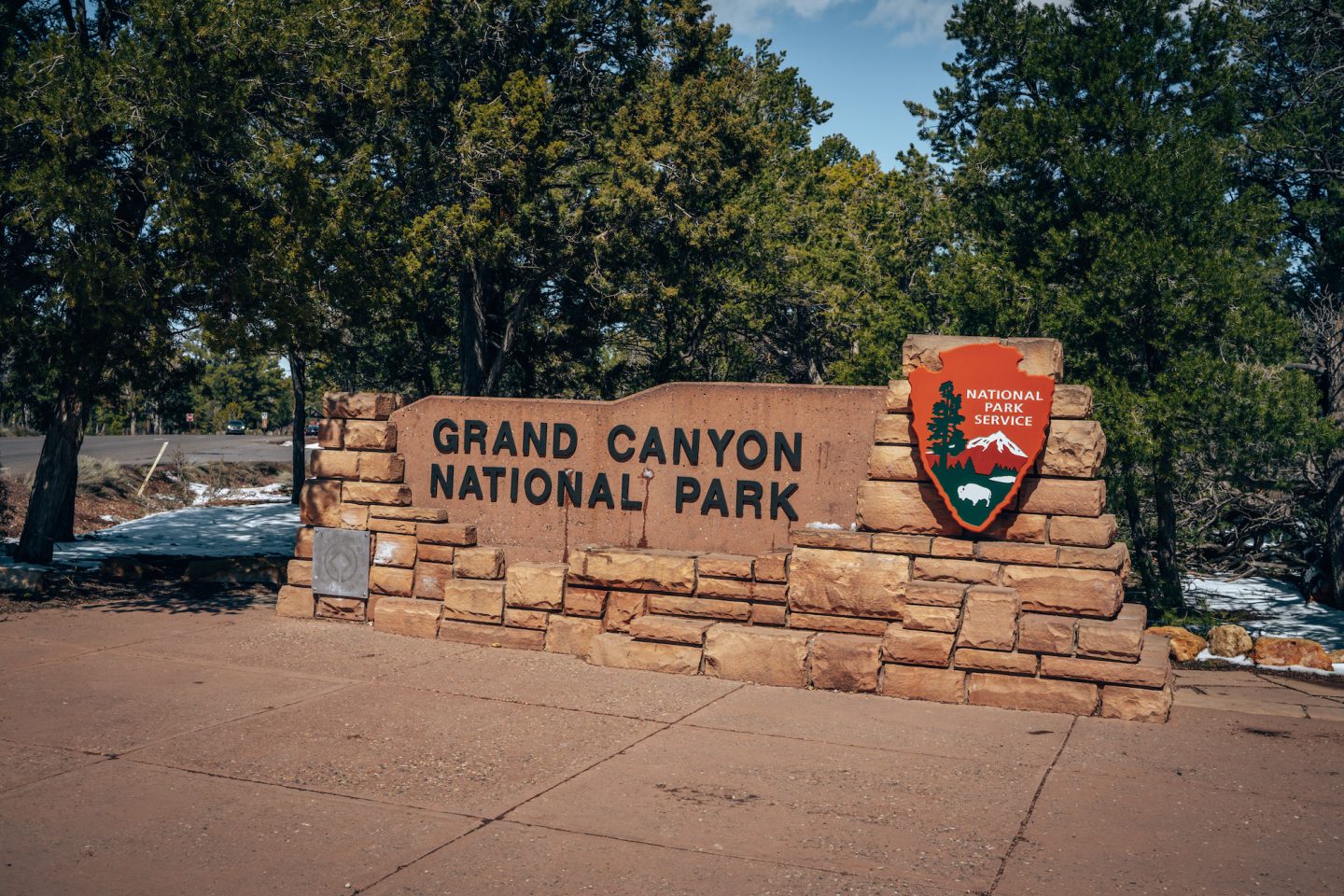
ENTRANCE FEES
Good news! No reservations or timed entries required! However, it is one of the most popular National Parks in the United States, so it is common for there to be long lines of vehicles at the entry points.
There are a number of visitors centers in the park between the north and south rim. That being said, the main visitors center, The Grand Canyon Village Visitor Center, is in the Grand Canyon Village along the south rim.
The Grand Canyon has a standard fee of $35 per vehicle, which is good for 7 days, no matter the time of year you are visiting. If you are someone who lives in Arizona or the neighboring areas, and would like to visit The Grand Canyon often, they do have a $70 annual pass that you can get as well. You can view all the entry and pass options HERE. That being said, for an extra $10, you can get the America The Beautiful Annual Pass.
If you are someone like us who is either on a mission to visit every single National Park in the U.S., or plans to visit more than 2 or 3 U.S. national parks per year, we’d highly recommend getting the America The Beautiful Pass. For $80, this annual pass gives you full access to all 63 National Parks in the U.S., as well as any federal recreational sites that charge a fee for entry. Stay at 3 National Parks and this easily pays for itself.
NORTH RIM OR SOUTH RIM?
The North Rim and South Rim of the Grand Canyon National Park in Arizona offers visitors two very different perspectives on this natural wonder. The North Rim is less developed and less crowded than the South Rim, with fewer amenities and services. However, it is also more remote and offers a quieter, more secluded experience, with stunning views of the canyon that are just as breathtaking as those from the South Rim. The North Rim is also located at a higher elevation than the South Rim. This can make it cooler and more comfortable in the summer months.
On the other hand, the South Rim is more developed and offers a wider range of amenities. Including more lodging and dining options, as well as more activities and attractions. It also offers more expansive views of the canyon, with several popular lookout points that offer sweeping panoramas of the park. Ultimately, the choice between the North Rim and South Rim comes down to personal preference. Each offers its own unique experience and beauty. But if you’re visiting for the first time, we’d highly recommend starting with the South Rim, which will be the focus of this guide.
WHERE TO STAY IN THE GRAND CANYON NATIONAL PARK
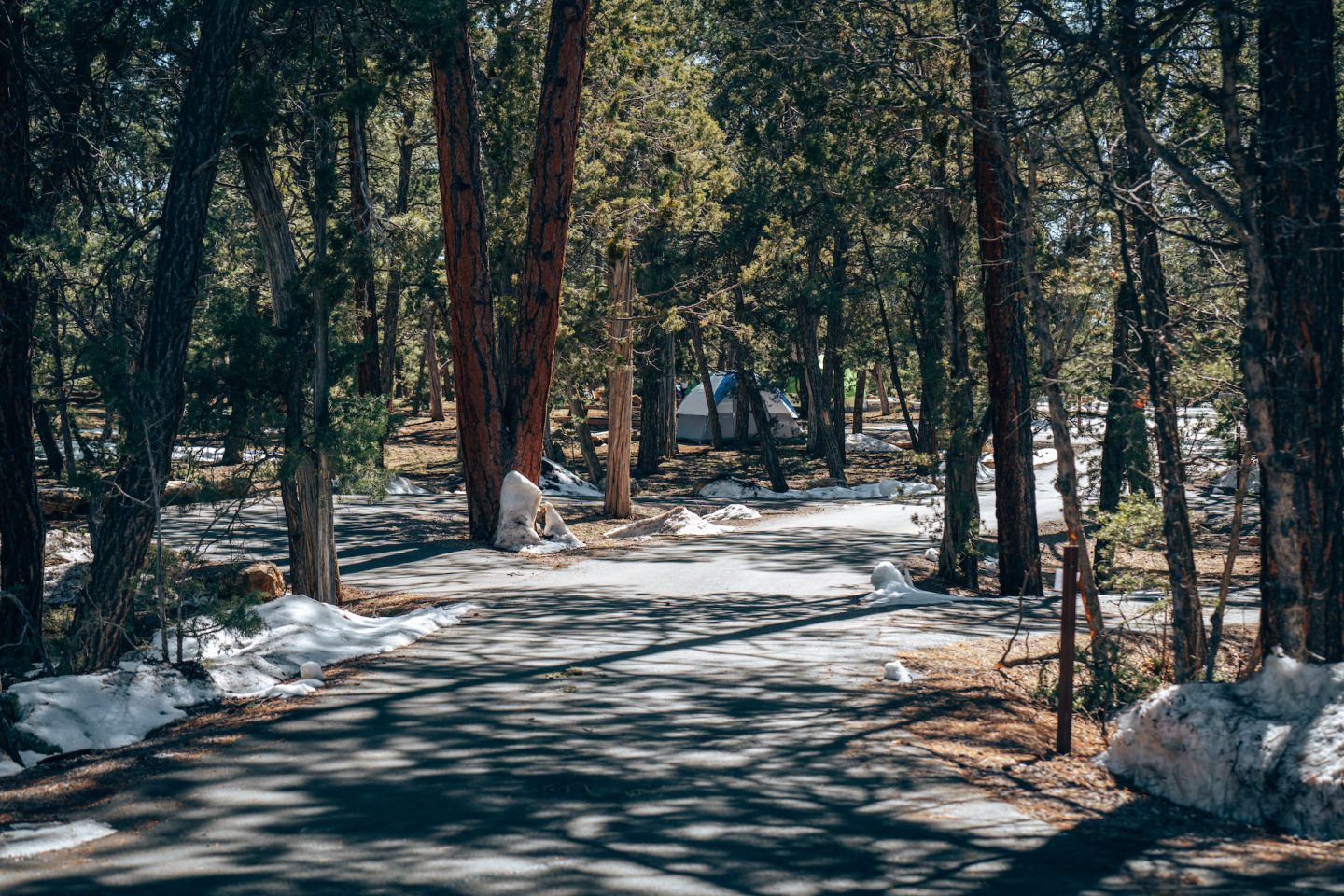
There are a variety of lodging options available for visitors to the Grand Canyon National Park. Ranging from rustic campsites to luxurious hotels. The park offers several campgrounds located throughout the park as well. Including both developed and backcountry sites for those looking to explore the wilderness. For those who prefer a more traditional hotel experience, there are several lodges and hotels located within the park, including the historic El Tovar Hotel, Bright Angel Lodge, and Maswik Lodge.
Visitors can also choose to stay in nearby towns like Tusayan, Williams, and Flagstaff. These offer a range of accommodations, from budget-friendly motels to high-end resorts. With so many options to choose from, visitors can find a place to stay that suits their needs and budget.
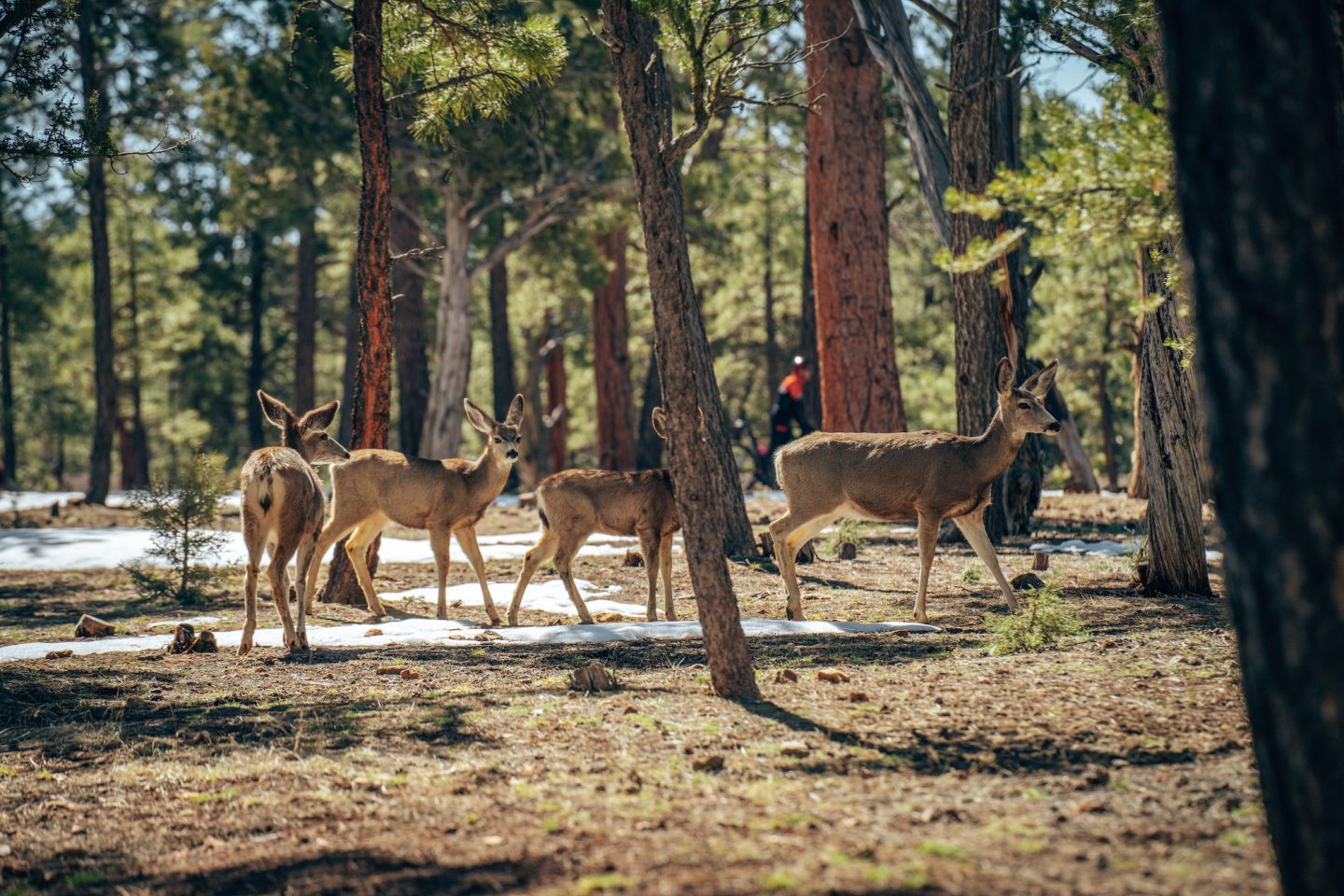
Our recommendation would be to stay at the Mather Campground. Being located so closely to the Grand Canyon Village, and having amenities such as bathrooms, showers, laundry facilities, water and dump stations, there’s not much more you could ask for. And one of the added bonuses is that elk commonly roam freely through the campgrounds. So when you wake up and step out of your tent or camper, you might just be welcomed by elk.
You can learn more about places to stay in The Grand Canyon National Park HERE. Additionally, there are a number of Harvest Host locations just south of the Grand Canyon for those of you who have RVs or campers.
THINGS TO DO IN GRAND CANYON NATIONAL PARK
The Grand Canyon National Park offers a wide range of activities and experiences for visitors to enjoy. Perhaps the most popular activity is hiking. With a variety of trails available for all skill levels, from short and easy hikes along the rim to challenging multi-day treks into the inner canyon. Visitors can also explore the canyon by rafting down the Colorado River, taking a mule ride, or flying over the canyon on a helicopter or airplane tour.
For those interested in history and culture, the park offers a number of educational programs and ranger-led tours that explore the area’s rich Native American heritage and pioneer history. Other popular activities include scenic drives, wildlife watching, stargazing, and photography. With so much to see and do, the Grand Canyon National Park is a destination that offers something for everyone. We’re going to focus on the hikes!
RIM TRAIL
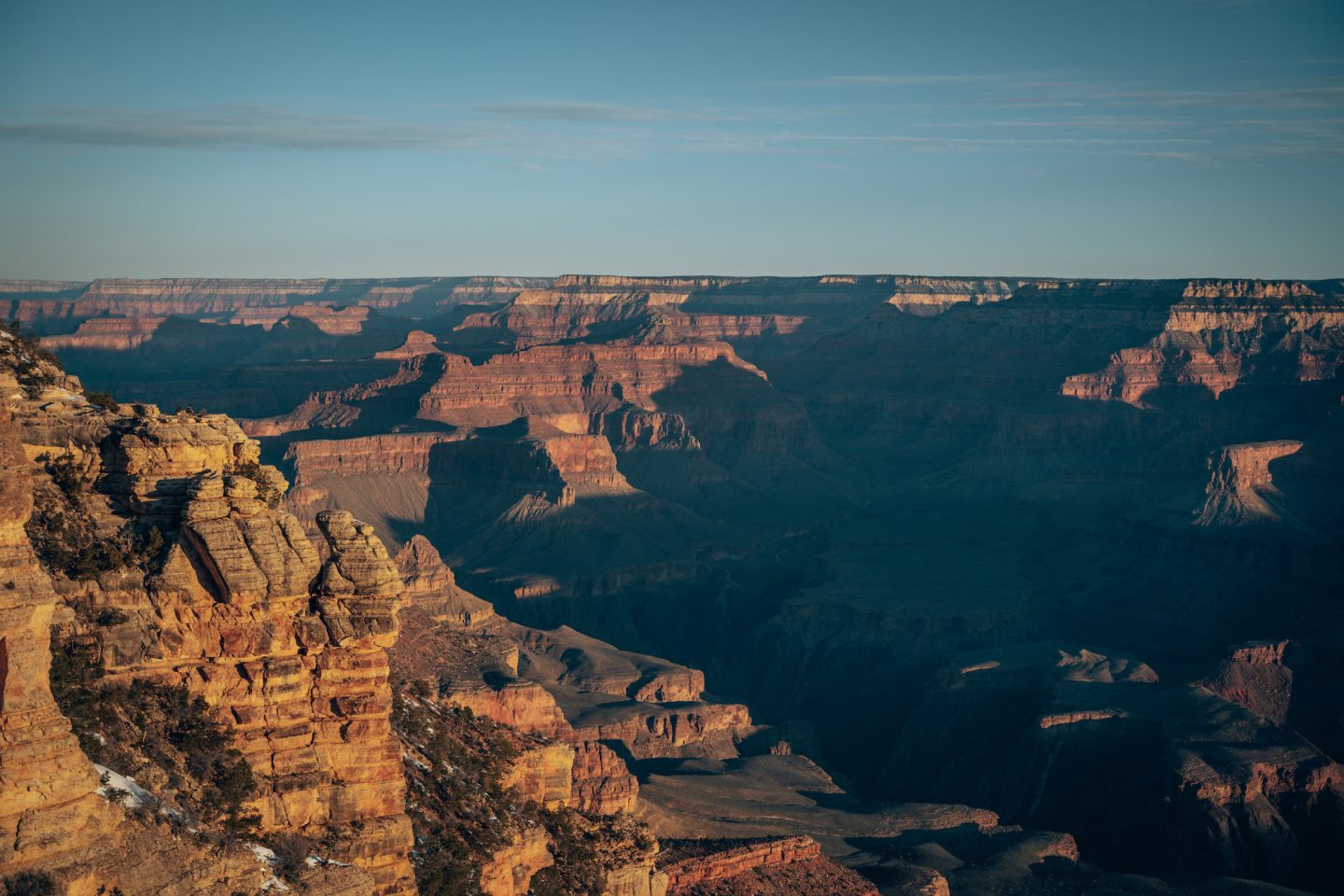
If you’re looking for a relatively easy way to experience sweeping views of the Grand Canyon, then the Rim Trail is the trail for you. While the trail spans 12+ miles along the rim, there are a ton of different entry points, viewing points and overlooks, and you can really choose how far or how long you want to spend along the rim. Our favorite lookout points are Mather Point, and Hopi Point. If you decide to do the full 12.7mi, you’ll either need to hike the same 12.7mi back, take the shuttle back, or have someone pick you up to bring you back.
- DIFFICULTY – Easy to hard
- LENGTH – 12.7mi / 20.4km point to point
- PET FRIENDLY – Yes! On leash.
BRIGHT ANGEL
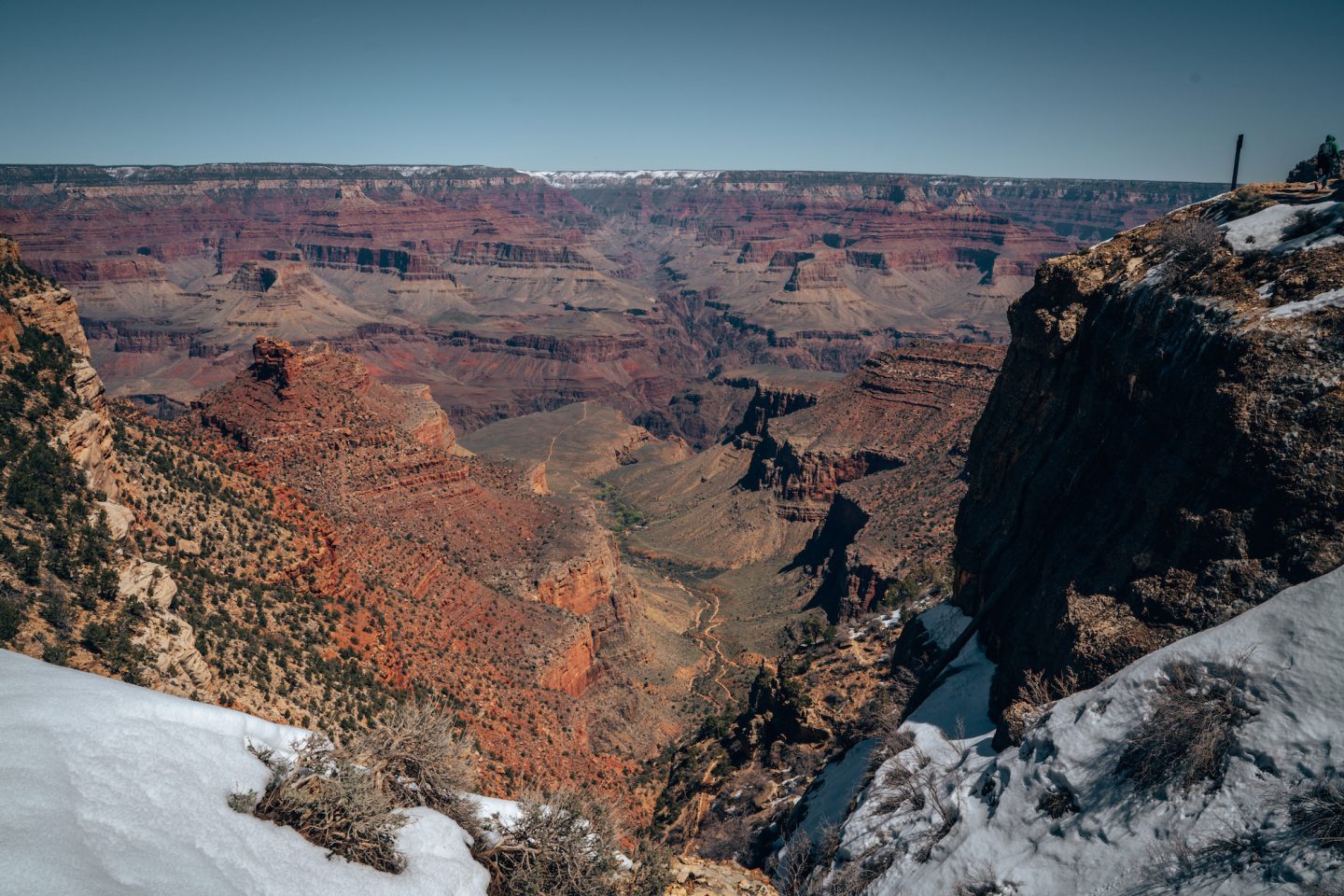
Easily one of the best ways to experience the canyon while hiking, is to hike the Bridge Angel trail, which runs down in to the canyon. Similar to the Rim Trail, this hike is LONG if you want to do the entire thing, but you can also go as far as you want, and turn back, which is what we did.
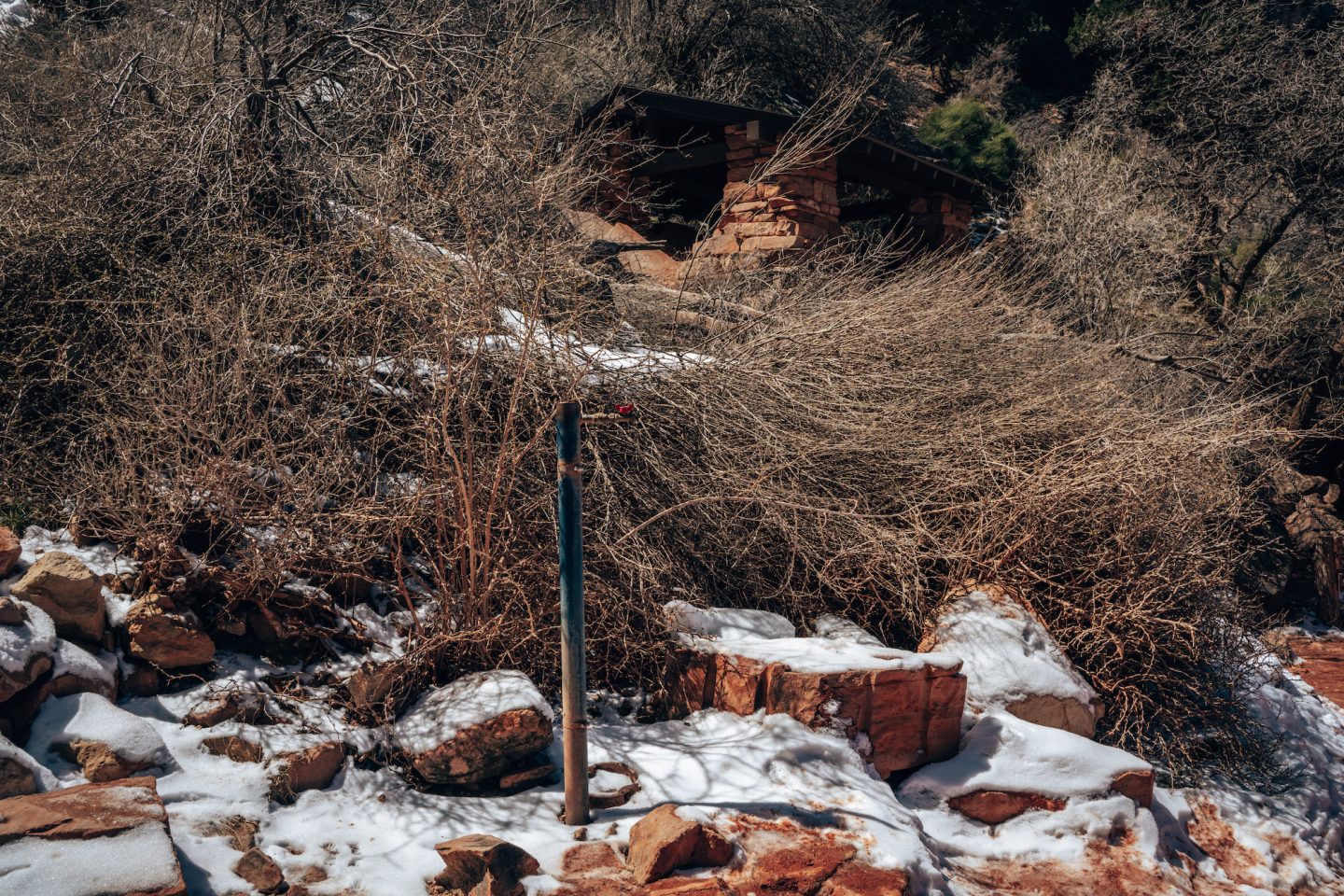
The trail has a number of stopping points as you go further down in to the canyon, offering water fill-ups (which operate seasonally) as well as bathrooms.
- DIFFICULTY – Easy to hard
- LENGTH – 15.3mi / 24.6km out and back
- PET FRIENDLY – No
SOUTH KAIBAB
The South Kaibab Trail has a ton of different options with varying lengths ranging from 1.8mi all the way up to 51mi if you want to do the Rim to Rim! This trail also connects with the Bright Angel Trail, so if you’re looking to really put in some miles, and hike through the canyon, this may be your best option.
One thing to note though, if you decided to do any hiking in the canyon beyond 5mi, we and the National Park Service highly recommend notifying the park rangers of your plans to avoid any potential issues.
- DIFFICULTY – Easy to hard
- LENGTH – 1.8mi / 2.9km up to 51mi / 82km
- PET FRIENDLY – No
HERMIT TRAIL
This hike is definitely for the experienced hiker, not for the faint of heart. The trail is unmaintained, and has rougher conditions than both Bright Angel, and South Kaibab. But the payoff might be worth it as it provides you access to a number of springs. If this sounds interesting to you, we highly recommend connecting with the park rangers to learn more.
- DIFFICULTY – Easy to hard
- LENGTH – 7.0mi / 11.3km
- PET FRIENDLY – No
GRANDVIEW TRAIL
Similar to Hermit, this hike is definitely for the experienced hiker, not for the faint of heart. The trail is unmaintained, and has rougher conditions than both Bright Angel, and South Kaibab, but provides you with access to Coconino Saddle and Horseshoe Mesa. If this sounds interesting to you, we highly recommend connecting with the park rangers to learn more.
- DIFFICULTY – Easy to hard
- LENGTH – 6.4mi / 10.3km
- PET FRIENDLY – No
OTHER HIKES TO EXPLORE
Many of the hikes along the South and North Rims, connect with one another, and allow you to sort of choose your own adventure. There are also a ton of North Rim specific trails that you could do if you are visiting the North Rim. To learn more about the hiking options, go HERE.
SUNRISE AND SUNSET VIEWS
One of the best activities to do at Grand Canyon National Park in Arizona, is easily viewing the canyon at sunrise and/or sunset. The blue and golden hour views over the canyon, are some of the best we’ve ever seen. While there are a ton of overlooks and viewpoints in the park, all offering incredible views of the canyon, there are two we would especially recommend. Mather Point and Hopi Point. Keep in mind those, these are also two of the most popular spots in the park. So they can definitely get crowded.
MATHER POINT
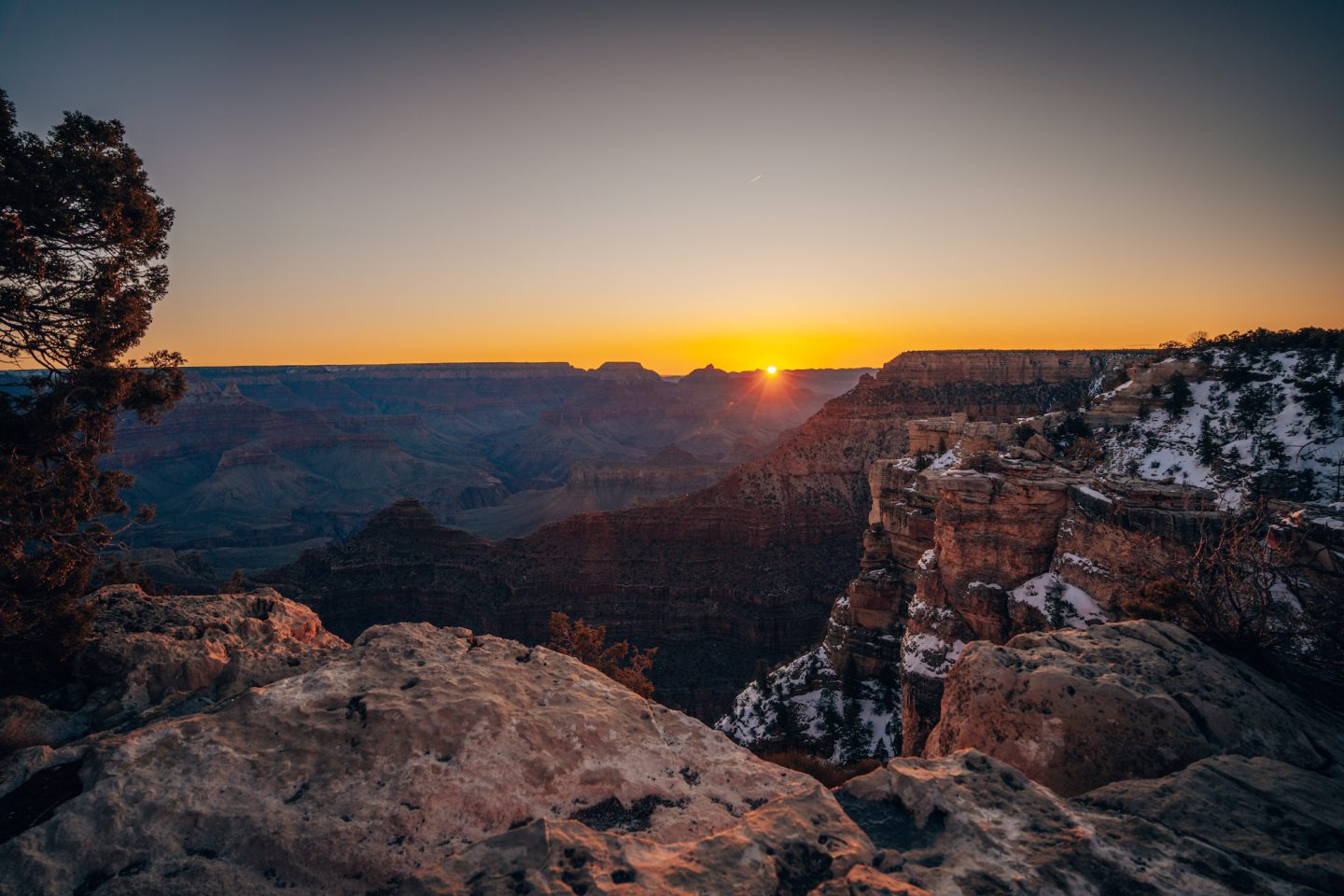
Mather Point is one of the easier spots to access, as it’s near the Grand Canyon Village Visitors Center, and has large parking lots surrounding it. It’s also right off the Rim Trail, so there are a number of different ways to access it. Our recommendation, would be to go here for sunrise. You will not regret it.
HOPI POINT
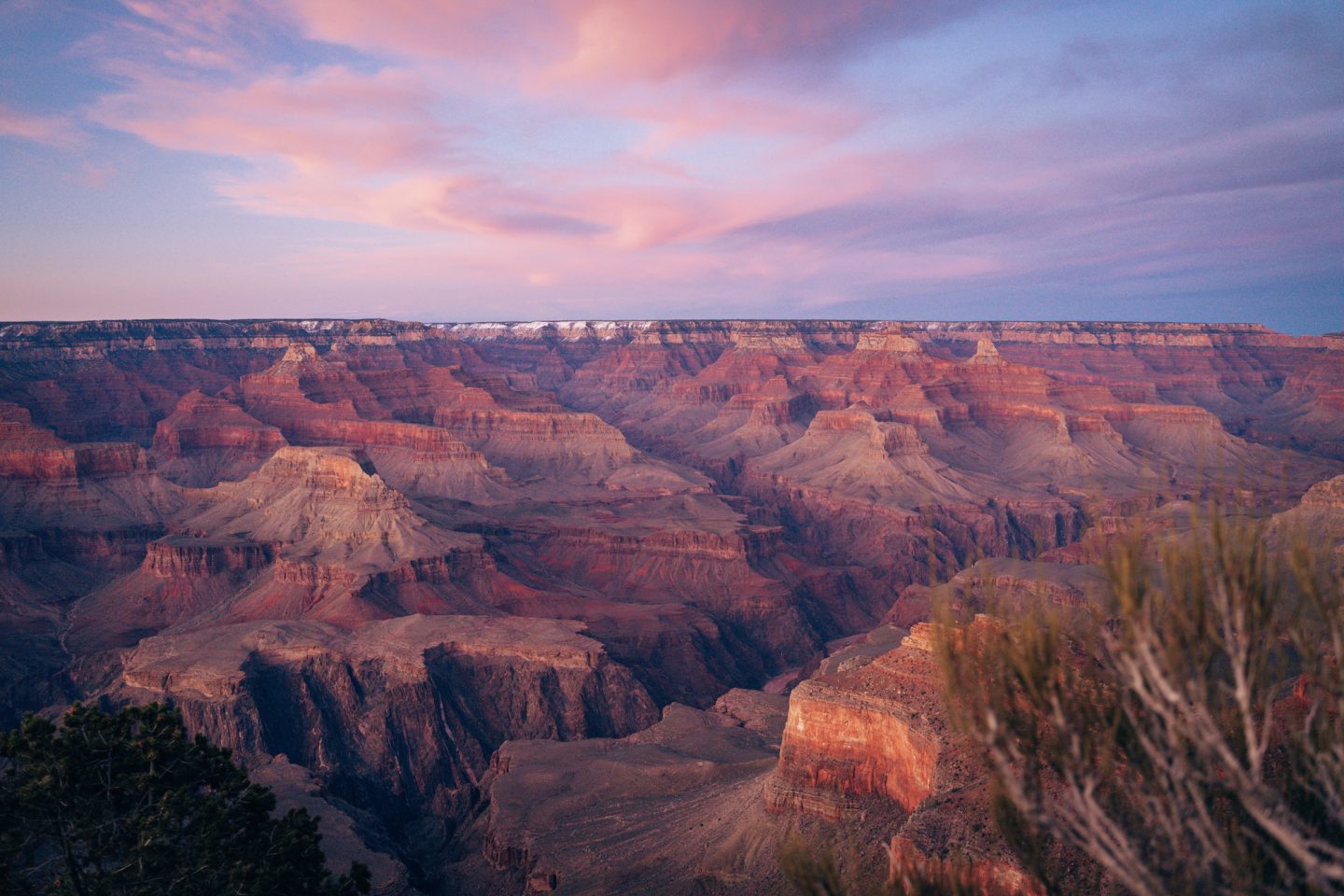
Hopi Point is where we’d recommend viewing sunset. Unfortunately it can only be accessed by shuttle. There are a number of different shuttle pickup areas throughout the park, but we found that parking at the Bright Angel Trailhead and taking the Red Line was the quickest and easiest. You can find more info on the shuttles HERE. The shuttles are typically packed to and from this point, as it’s easily one of the most popular sunset spots. So plan accordingly and arrive early so you don’t miss the best viewing!
ALTERNATIVE ACTIVITIES
As we mentioned above, he Grand Canyon National Park offers a wide range of activities and experiences for visitors to enjoy, rafting down the Colorado River, taking a mule ride, or flying over the canyon on a helicopter or airplane tour. To learn more about these options, go HERE.
TINGGLY EXPERIENCES
If you aren’t familiar with Tinggly, they are a company based on gifting experiences over stuff. So for that next birthday, or gift-giving holiday, instead of gifting stuff, give the gift of an experience. Memories that will last forever. We have a full review of Tinggly that you can read HERE.
BEST TIME TO VISIT THE GRAND CANYON NATIONAL PARK IN ARIZONA
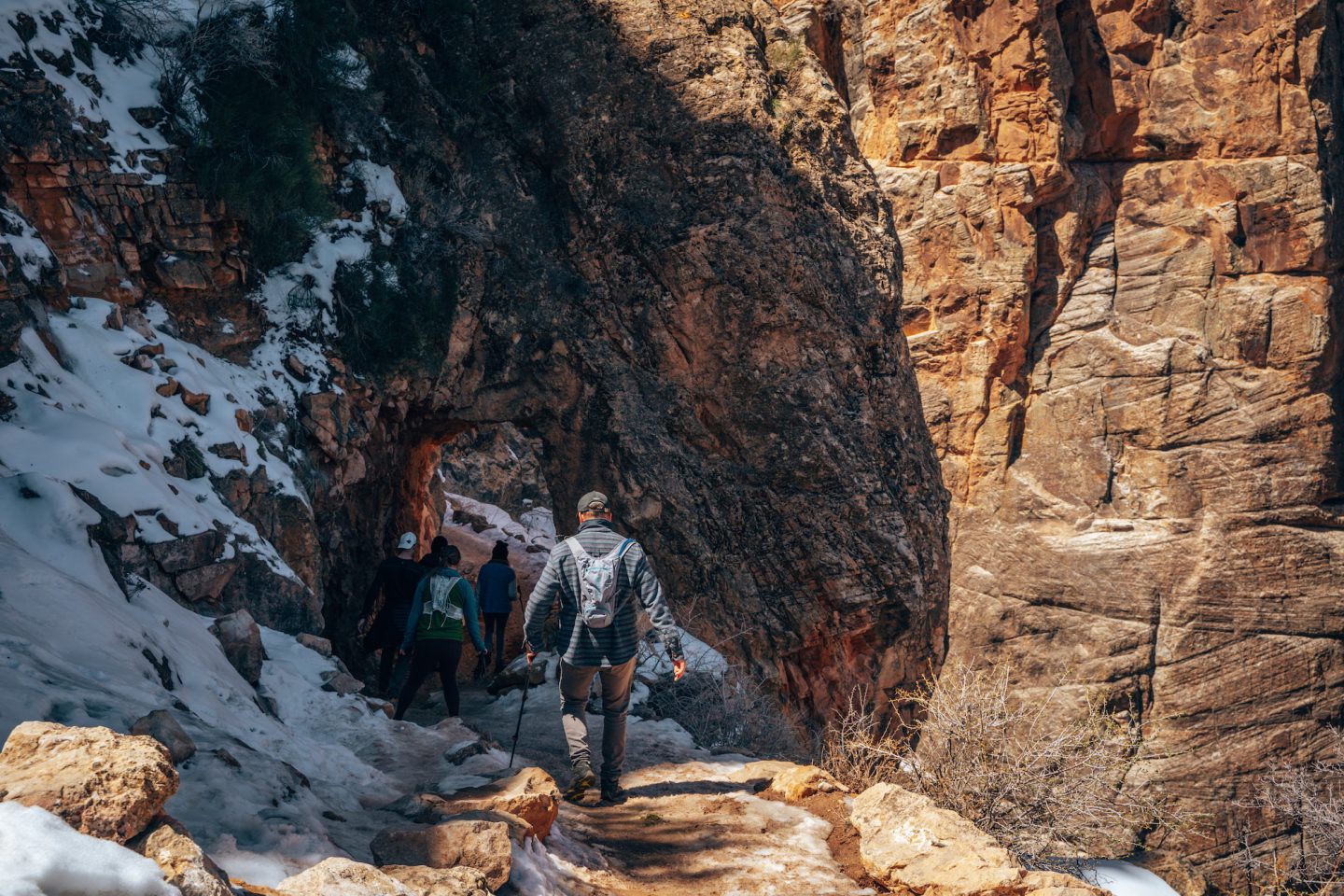
The best time to visit the Grand Canyon National Park in Arizona depends on a variety of factors, including weather, crowds, and personal preferences. The peak tourist season is from June to August, when the weather is generally warm and sunny and the park is at its busiest. However, visitors can expect long lines and crowded trails during this time, as well as higher prices for lodging and activities. Spring (March to May) and fall (September to November) are generally considered the best times to visit, with milder temperatures, fewer crowds, and lower prices. Winter (December to February) can also be a good time to visit for those who don’t mind the cold, as the park takes on a serene, otherworldly beauty covered in snow. Ultimately, the best time to visit the Grand Canyon National Park depends on what you’re looking for and what you’re willing to put up with.
We went in March, and it was still quite brisk, and there was definitely snow on the ground, but we had minimal issues with crowds.
You can keep up with park updates HERE.
SEASONS
SPRING
- Avg Low temps: 24ºF / -4ºC
- Avg High temps: 53ºF / 12ºC
SUMMER
- Avg Low temps: 43ºF / 6ºC
- Avg High temps: 80ºF / 32ºC
FALL
- Avg Low temps: 43ºF / 6ºC
- Avg High temps: 76ºF / 24ºC
WINTER
- Avg Low temps: 18ºF / -8ºC
- Avg High temps: 45ºF / 7ºC
HOW MUCH TIME IS NEEDED IN THE GRAND CANYON NATIONAL PARK
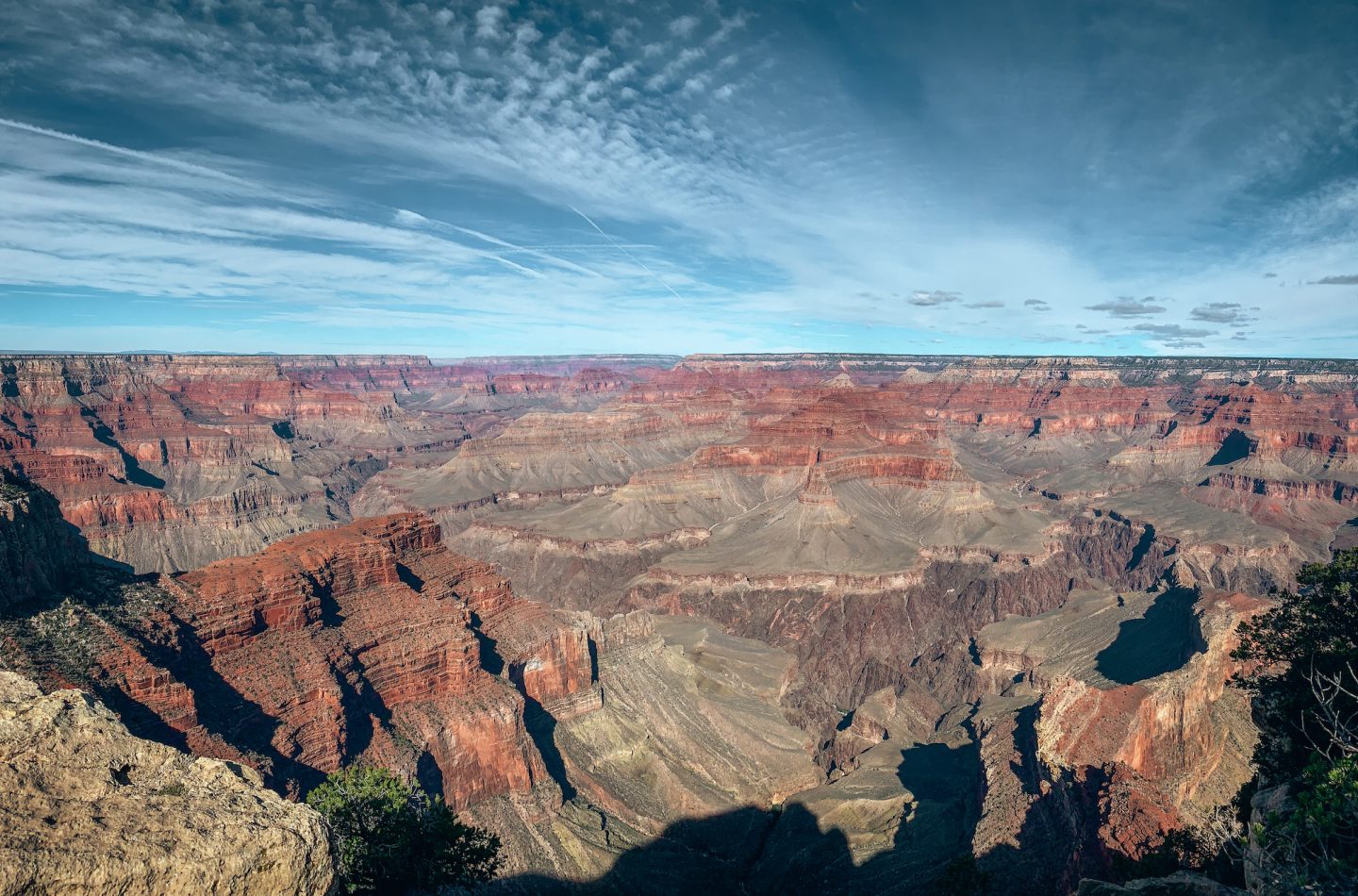
The amount of time needed to visit the Grand Canyon National Park depends on a variety of factors, including your travel style, interests, and priorities. At a minimum, most visitors should plan to spend at least one full day exploring the park, including hiking along the rim, visiting lookout points, and taking in the stunning scenery.
However, for those who want to experience more of what the park has to offer, a minimum of two to three days is recommended, allowing for more in-depth exploration of the park’s trails, viewpoints, and attractions.
For those who are interested in backcountry hiking or rafting trips, a longer stay of five to seven days or more may be necessary. Ultimately, the amount of time needed to visit the Grand Canyon National Park depends on your individual interests and priorities, so it’s important to plan your itinerary carefully to make the most of your time in this incredible natural wonder.
OTHER THINGS TO CONSIDER
CELL PHONE SERVICE
Cell phone service inside the park is relatively decent, subject to your carrier. We found that between Verizon and T-Mobile, we had service in most areas around the Grand Canyon Village.
That being said, we’d still highly recommend downloading offline maps, trail info, and make sure to share your plans and itinerary with someone outside of the park in case of emergency.
PET FRIENDLY?
One of the best things about Grand Canyon National Park in Arizona, is that it is relatively pet friendly! The park breaks it down by saying, pets are allowed everywhere above the rim. This means the Rim Trail, all the lookout points, campgrounds and surrounding areas, pets are welcome as long as they are leashed, and picked up after.
However, any trails that go down below the rim into the canyon, are not pet-friendly.
You can find more info on the NPS website HERE.
LEAVE NO TRACE & 10 HIKING ESSENTIALS
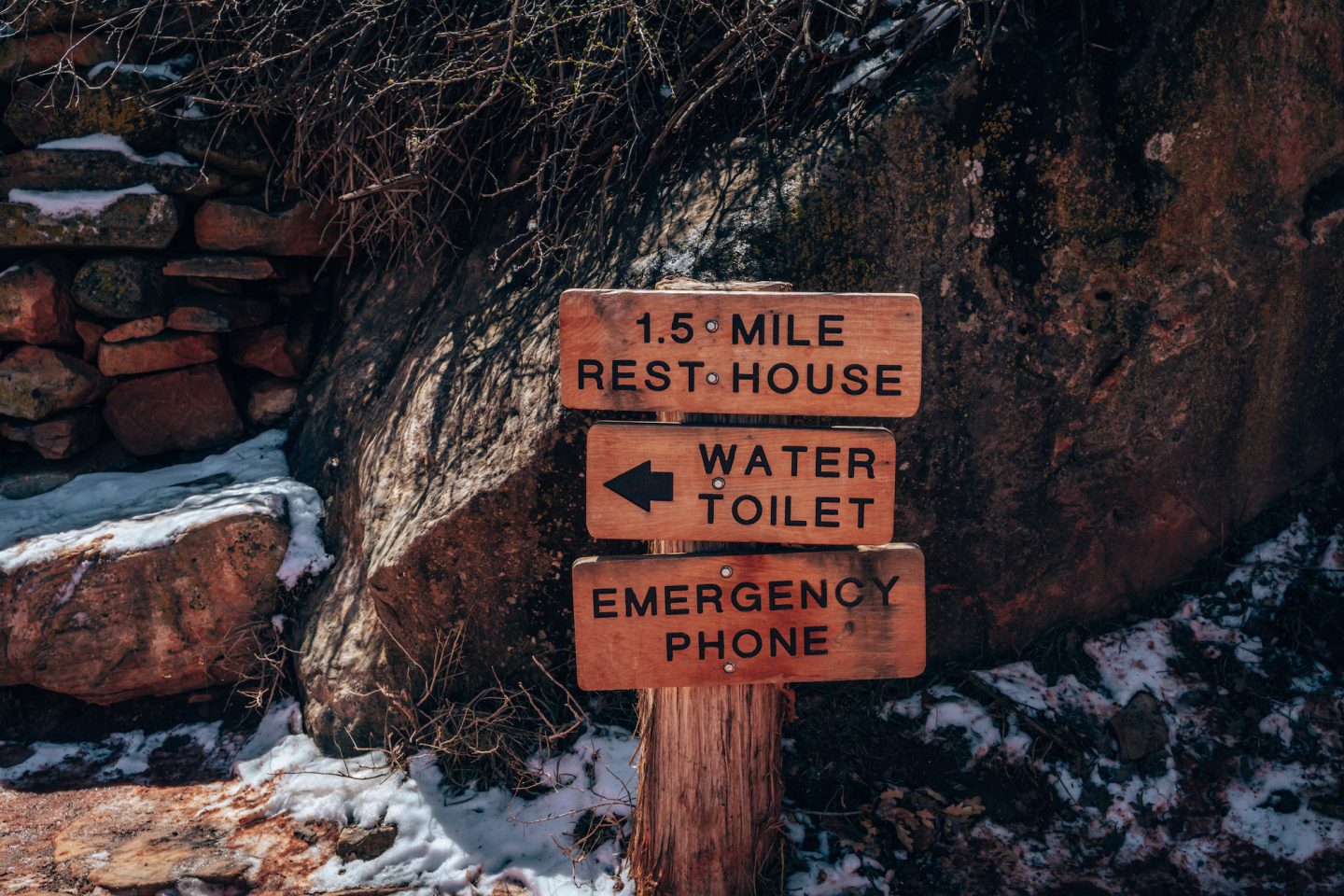
This park is full of unique landscapes and fragile environments, both for plant life, and animals alike. So it is incredibly important to practice the 7 PRINCIPLES OF LEAVE NO TRACE, and follow the posted signage and guidelines of the park. If you aren’t familiar with Leave No Trace, here’s a breakdown:
- Plan ahead and prepare
- Travel and camp on durable surfaces
- Dispose of waste properly
- Leave what you find
- Minimize campfire impact
- Respect wildlife
- Be considerate of others
There are additional and more in-depth details of what each of these means on the LNT website, so make sure to take a look at that!
Similarly, because of how harsh the weather conditions can be, and because there is virtually no cell-phone service anywhere, it is important to hike with the 10 Essentials of Hiking. If you aren’t familiar, here’s a breakdown:
- NAVIGATION – maps, guides, compass, GPS locator
- HEADLAMP – flashlight and extra batteries or charger
- SUN PROTECTION – body sunscreen, lip sunscreen, and clothing protection
- FIRST AID – including animal and bug repellents
- KNIFE – as well as knife repair kit
- FIRE – matches, lighter, tinder and striker
- SHELTER – tent, cover, or anything to protect and cover you
- FOOD – snacks and extra meal
- WATER – more than the minimum recommended amount
- CLOTHES – enough to handle night-time elements
Interested in knowing what gear we use for all our adventures? Check out our Rock Porch lockers which list all of the gear we use, and where to shop it!
ULTIMATE GUIDE TO THE GRAND CANYON NATIONAL PARK IN ARIZONA
Let us know what you thought of this, if we missed anything, and if you plan on taking a trek to Grand Canyon National Park at some point, down below in our comments!
And if you’re looking for some other Arizona or National Park inspiration, check out some of our other articles:
- ULTIMATE GUIDE TO PETRIFIED FOREST NATIONAL PARK
- ULTIMATE GUIDE TO SAGUARO NATIONAL PARK
- BEST HIKES IN SEDONA ARIZONA
- ULTIMATE GUIDE TO DEATH VALLEY NATIONAL PARK
- ULTIMATE GUIDE TO CHANNEL ISLANDS NATIONAL PARK (SANTA CRUZ ISLAND)
If you aren’t following us on Instagram, then check us out there and give us a follow as this will be the best place to follow our journey and adventures!
Thanks for stopping by!
Ryan & Katy

